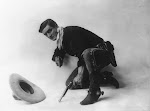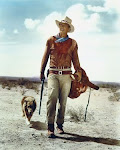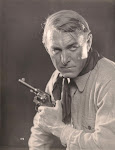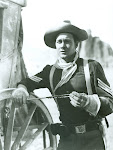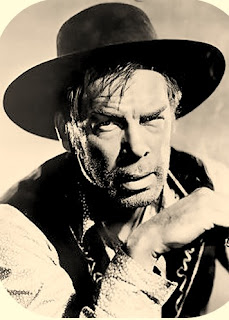
Harry Carey (January 16, 1878 – September 21, 1947) was an American actor and one of silent film's earliest superstars. Carey was born Henry DeWitt Carey II in The Bronx, New York, the son of Ella J. Ludlum and Henry DeWitt Carey, a prominent lawyer and judge. He attended Hamilton Military Academy then studied law at New York University. After a boating accident which led to pneumonia, Carey wrote a play while recuperating and toured the country in it for three years, earning a great deal of money, all of which evaporated after his next play was a failure. In 1911, his friend Henry B. Walthall introduced him to director D.W. Griffith, for whom Carey was to make many films. Although Carey, one of Hollywood's finest character actors of the sound era, received an Oscar nomination for his role as the President of the Senate in the 1939 film, Mr. Smith Goes to Washington, he is best remembered as one of the first stars of the Western film genre. He married at least twice and perhaps a third time (census records for 1910 indicate he had a wife named Clare E. Carey, and some references state that he was also married to actress Fern Foster). His last marriage was to actress Olive Fuller Golden (1896-1988). They purchased a large ranch in Saugus, California, north of Los Angeles, which, in 2005, was turned into Tesoro Adobe Historic Park. Their son, Harry Carey, Jr., would become a character actor, most famous for his roles in Westerns. Father and son both appear (albeit in different scenes) in the 1948 film, Red River, and mother and son are both featured in 1956's The Searchers.
Carey made his Broadway stage debut in 1940. Harry Carey died in 1947 from a combination of lung cancer, emphysema and coronary thrombosis, at the age of 69. He was interred in Woodlawn Cemetery in the family mausoleum in The Bronx, New York. For his contribution to the motion picture industry, Harry Carey has a star on the Hollywood Walk of Fame at 1521 Vine Street. As an homage to him, John Wayne held his right elbow with his left hand in the closing shot of The Searchers, imitating a stance Carey himself often used in his films. According to Wayne, both he and Carey's widow Olive (who costarred in the film) wept when the scene was finished. In 1976, he was inducted into the Western Performers Hall of Fame at the National Cowboy & Western Heritage Museum in Oklahoma City, Oklahoma. (From Wikipedia)
Carey made his Broadway stage debut in 1940. Harry Carey died in 1947 from a combination of lung cancer, emphysema and coronary thrombosis, at the age of 69. He was interred in Woodlawn Cemetery in the family mausoleum in The Bronx, New York. For his contribution to the motion picture industry, Harry Carey has a star on the Hollywood Walk of Fame at 1521 Vine Street. As an homage to him, John Wayne held his right elbow with his left hand in the closing shot of The Searchers, imitating a stance Carey himself often used in his films. According to Wayne, both he and Carey's widow Olive (who costarred in the film) wept when the scene was finished. In 1976, he was inducted into the Western Performers Hall of Fame at the National Cowboy & Western Heritage Museum in Oklahoma City, Oklahoma. (From Wikipedia)
Here's a nice tribute to Carey from Youtube:


